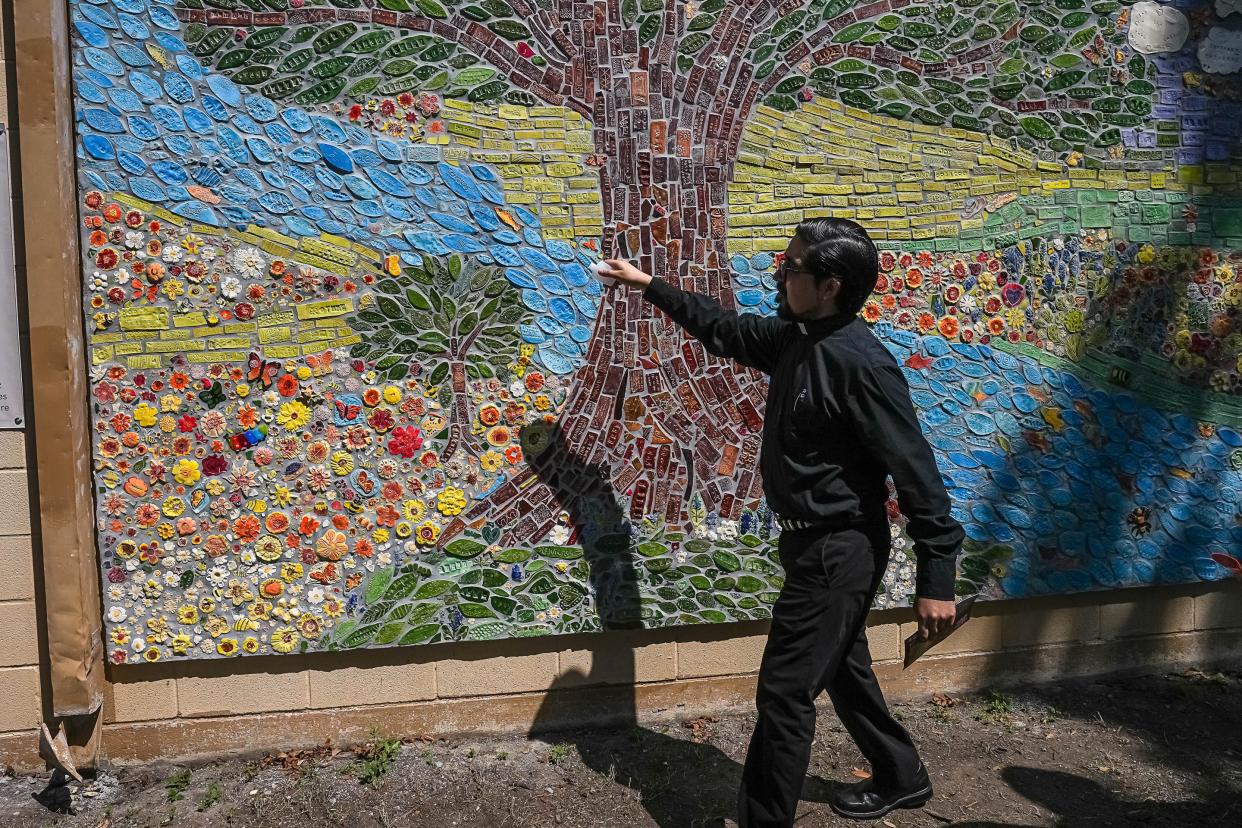Faith: Why do children die? Some questions don't have good answers

Fred Epstein, noted neurosurgeon of slow growing cancers in children, now deceased, wrote with joint author, Joshua Horwitz, "If I Get to Five: What Children Can Teach Us About Courage and Character."
For Epstein, “the question, ‘Why do children suffer?’ has no answer, unless it’s simply, ‘to break our hearts.’ Once our hearts get broken, they never fully heal. They always ache. But perhaps a broken heart is a more loving instrument. Perhaps only after our hearts have been cracked wide open, have finally and totally unclenched, can we truly know love without boundaries.”
This poignant quote appeared in a recent Plough Daily Dig and touched me deeply. The suffering and death of our children, and those children close to us, no matter their age, shatters us to the core. We want to climb the highest mountain and wail. We want to crawl into the darkest cave and cry.
It has always been thus. Philosophers, theologians, writers, poets and plain people like you and me have pondered this question, this assault on our being for ages. Some theories sting with their simplicity — God wanted another angel in heaven. Others like Fyodor Dostoevsky, noted for dealing with essential questions of life, pose a stark reality when he stated, “The death of a child is the greatest reason to doubt the existence of God.”
In sum, theologians from many religions get tangled up in twisted arcane arguments that aim to answer the gut-wrenching question of why children suffer and die, but their debates don’t solve a thing or soothe our angst.
William Sloane Coffin, a preacher eulogizing his son, said, “The one thing that should never be said when someone dies is ‘It is the will of God.’ Never do we know enough to say that. My own consolation lies in knowing that it was not the will of God that Alex die … God’s heart was the first of all of our hearts to break.”
Pop culture, perhaps in the synchronicity of surgeon Epstein, has embraced songwriter Leonard Cohen’s famous lyrics in his song "Anthem,"
“Ring the bells that still can ring
Forget your perfect offering
There is a crack, a crack in everything
That’s how the light gets in”
So for Epstein and Cohen, it’s all about cracks letting in love and light. Disaster changing us or damning our response to living.
We’ve been or seen those who let the light in, let the love in after a time, and it makes life bearable, and sometimes beautiful. Surely, the pain never really goes away — birthdays, holidays and particular memory joggers can reduce us to puddles. Still, we press on, having no answers at all to the chaos, the confusion and the broken heartedness we feel.
Others of us, or those we know, cannot let the love in through the cracks, cannot let the light in. For these souls, the cracks only admit darkness, anger and a dismissal of hope. Guilt and/or blaming obscure everything in this black place. The future remains bleak.
Childhood deaths that consume us can be caused by congenital abnormalities, suffocation, drowning, fire or disease to mention a few. Some we can address — crib safety, life jackets, smoke alarms. Others we cannot control.
Despite improved living conditions in many cities and towns, and the advances made in medicine, USA Facts reported this June that “Children are dying at the highest rate in 13 years.”
Specifically, Facts states: “The share of children and teens who die each year declined for nearly three decades and leveled off in the 2010s. Then, in 2020, the rate began to increase. By 2021, it reached its highest rate since 2008.
Although this coincided with the pandemic, the virus itself accounted for a small share of the increase. According to the data from the Centers for Disease Control and Prevention (CDC), the growing childhood death rates between 2019 and 2021 were primarily due to firearm injuries, drug overdoses, and car accidents.”
The Children’s Defense Fund, in "The State of America’s Children 2023," concurs, “Gun violence remains the number one cause of death for children ages 1-19.”
So people of faith, or maybe just fellow citizens believing in a loving and just planet, let’s band together to eliminate firearm injuries and drug overdoses.
Challenging, yet still within our power. Other childhood deaths, despite critical research, are not as easily within our control, but we can wipe out guns and drugs that kill our children if we really care. Let’s let the love in. Let’s let the light in.
Vote. Be involved. Pray.
Judy Knotts is a parishioner of St. John Neumann Catholic Church, and former head of St. Gabriel's Catholic School and St. Michael's Catholic Academy.
This article originally appeared on Austin American-Statesman: Faith: Answering the question why children die

